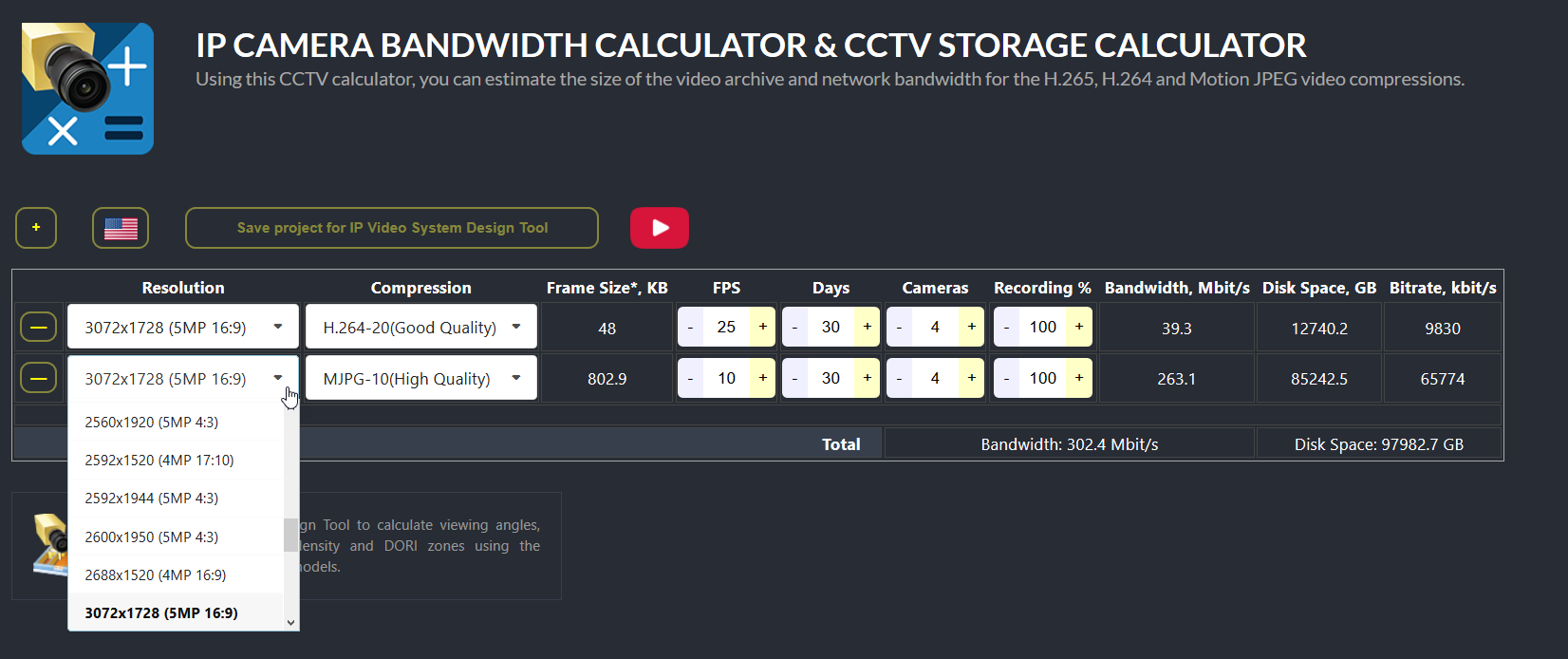- Messages
- 436
- Points
- 28
Bandwidth and Storage Calculators
Knowing how much storage and bandwidth you're going to need for the system you're designing is absolutely critical. It's all well and good designing a fantastic CCTV system but if you don't have the bandwidth infrastructure to support what you've envisioned or the HDD storage capacity to record for as long as you need, then you could get stung.
We like to recommend the Western Digital Purple series of surveillance hard drives for CCTV purposes.
We have many customers who are very surprised by the amount of storage required to record high-resolution cameras continuously for example, and it's a bitter dose of reality when they discover that the cost of recording multiple 4K cameras for 60 days can become outlandish very quickly!
Thankfully, there are plenty of calculators available online that use linear equations to give an approximation of your storage and bandwidth requirements with a given set of variables, such as resolution and frame rate.
- Our Blog - We have a bandwidth and storage calculator from JVSG embedded into our blog which is excellent at designing simple systems like CCTV for your home. Very straightforward to use, and it has proven very useful.
Worth checking out - it's free!
- IP Video System Design Tool - This is the full version of the above bandwidth and storage calculator from JVSG which we use in the office. It's a paid-for service, with a much wider toolkit and frequent updates available compared to the condensed version on our blog. Overkill for most, but very useful for any installers.
- Manufacturer's Own Calculator - Many manufacturers develop their own bandwidth and storage calculators to supplement their product line, and often these provide the most comprehensive support for first-party features. For example, Hikvision's Disc Calculator allows calculations to be made using Hikvision's H.264+ proprietary smart video encoding whereas others can't. AXIS Design Tool can do the same with their Zipstream smart codec, too. Useful for one-manufacturer systems.
___________________________________________
Using a Bandwidth / Storage Calculator
The entire point of using a bandwidth and storage calculator is to calculate your requirements based on your own settings, so there's obviously no "correct" settings. I'll cover what each setting you're likely to encounter means below.
Here is an image of the calculator embedded into our blog with some common settings.
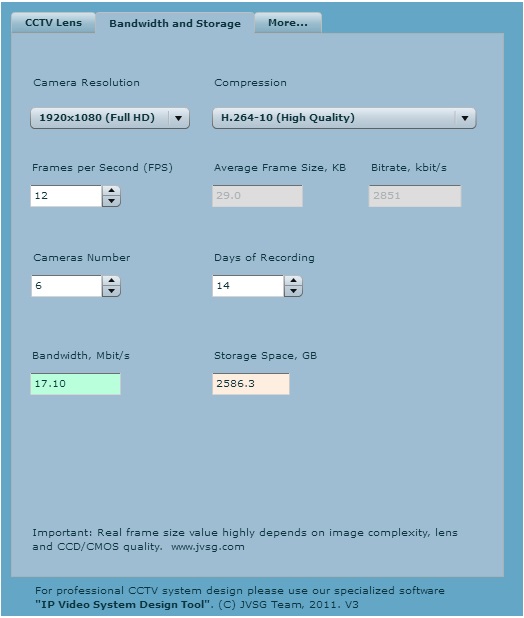
This is often surprising for a lot of people, especially since most of us are used to smaller storage requirements of your average home PC. Before H.264 was in widespread use, cameras required far more bandwidth and storage with less efficient codecs. Now, we have H.265 looming on the horizon, so things are constantly improving.
Each of the options you are likely to encounter with any calculator are covered below.

1280x720, 1920x1080 and more recently 4MP resolution will all be very common calculations, as Hikvision's 4MP series has proven extremely popular and has somewhat set the benchmark for a low-cost camera's resolution.

I'd always recommend selecting H.264 (High Quality) or an option of similar ilk of given the chance - it's best to plan for the largest requirements and having adequate storage / bandwidth rather than the alternative.

Increasing the FPS of your camera, like resolution, will greatly increase its bandwidth and storage requirements. The opposite is true when decreasing FPS.

In the above example, I'm calculating options for a CCTV system comprised of six cameras to retain footage for 14 days, which is typically plenty for a residential application. The calculator will then display the amount of storage and bandwidth I'd need to achieve this.

As mentioned above, increasing the resolution of your cameras can drastically increase the storage requirements of your system. In the below example, I've increased the resolution of the six cameras from 1920x1080 (2MP) to 2288x1712 (4MP) and kept the other settings the same. The previous 1920x1080 results are present for comparison's sake.
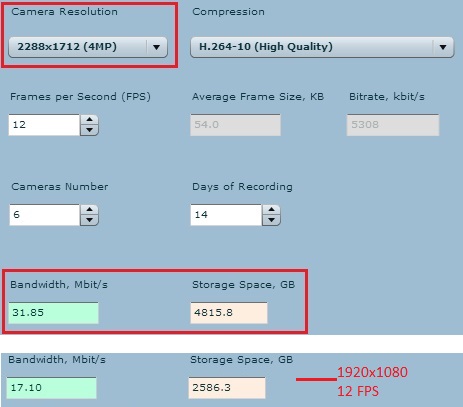
As you can see, increasing the resolution of the cameras from 2MP to 4MP nearly doubles the required storage and bandwidth from 2586.3GB to 4815.8GB and 17.10Mbps to 31.85Mbps.
The same can be seen when you increase the FPS of the cameras instead.
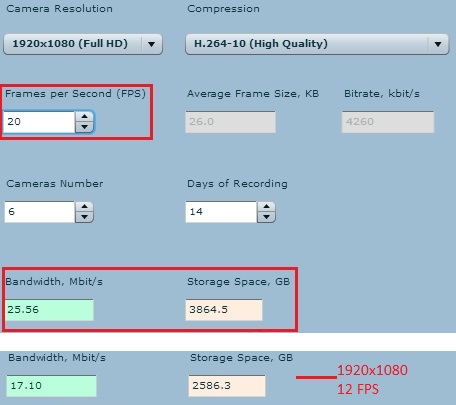
Of course, if you increased both the resolution AND the frames per second of the cameras, your requirements would increase even further.
Increasing the Days of Recording will also of course directly increase the required storage space to record for the greater amount of days (bandwidth will remain the same).
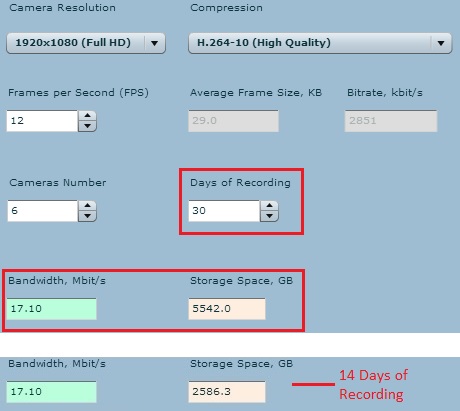
Very helpful at getting a feel for your requirements!
___________________________________________
Whilst this embedded calculator in our blog (above) is fine for most systems, it doesn't allow you to calculate a system comprised of cameras with different resolution and FPS settings without doing them one-at-a-time, independent from each other, noting down the results for each camera and totalling them yourself. For a small system, this is often fine, but for medium-large systems or installers this can prove a headache.
As discussed, JVSG also produce a paid-for bandwidth and storage calculator we use in the office, called IP Video System Design Tool which allows you to mix-and-match cameras of different settings, as per below.
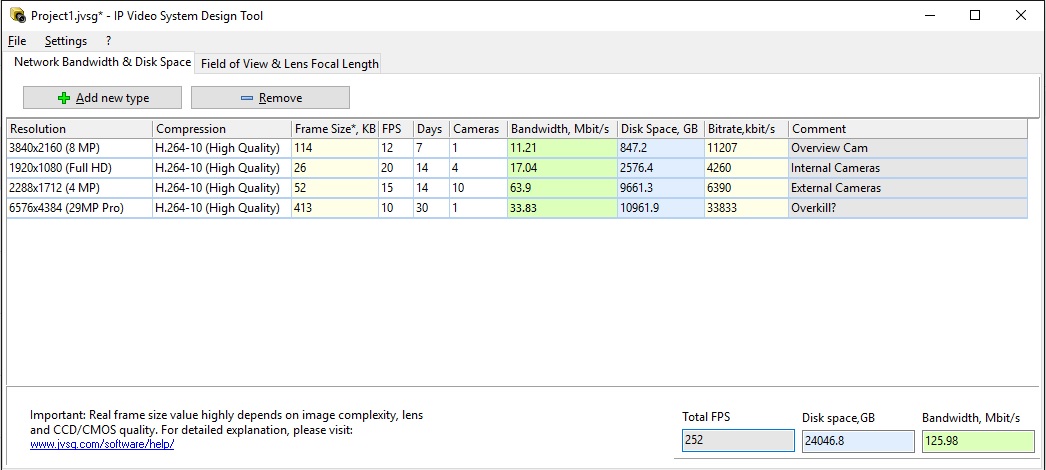
___________________________________________
Many manufacturers also produce their own bandwidth and storage calculators which factor in proprietary features that may not be covered by third-party calculators.
For example, Hikvision have produced their own Disk Space Calculator which allows you to calculate requirements when using their smart video encoding technology, H.264+ which is otherwise not possible with JVSG. This feature could save you a significant amount of storage and bandwidth, so it's absolutely worth keeping these options in mind.
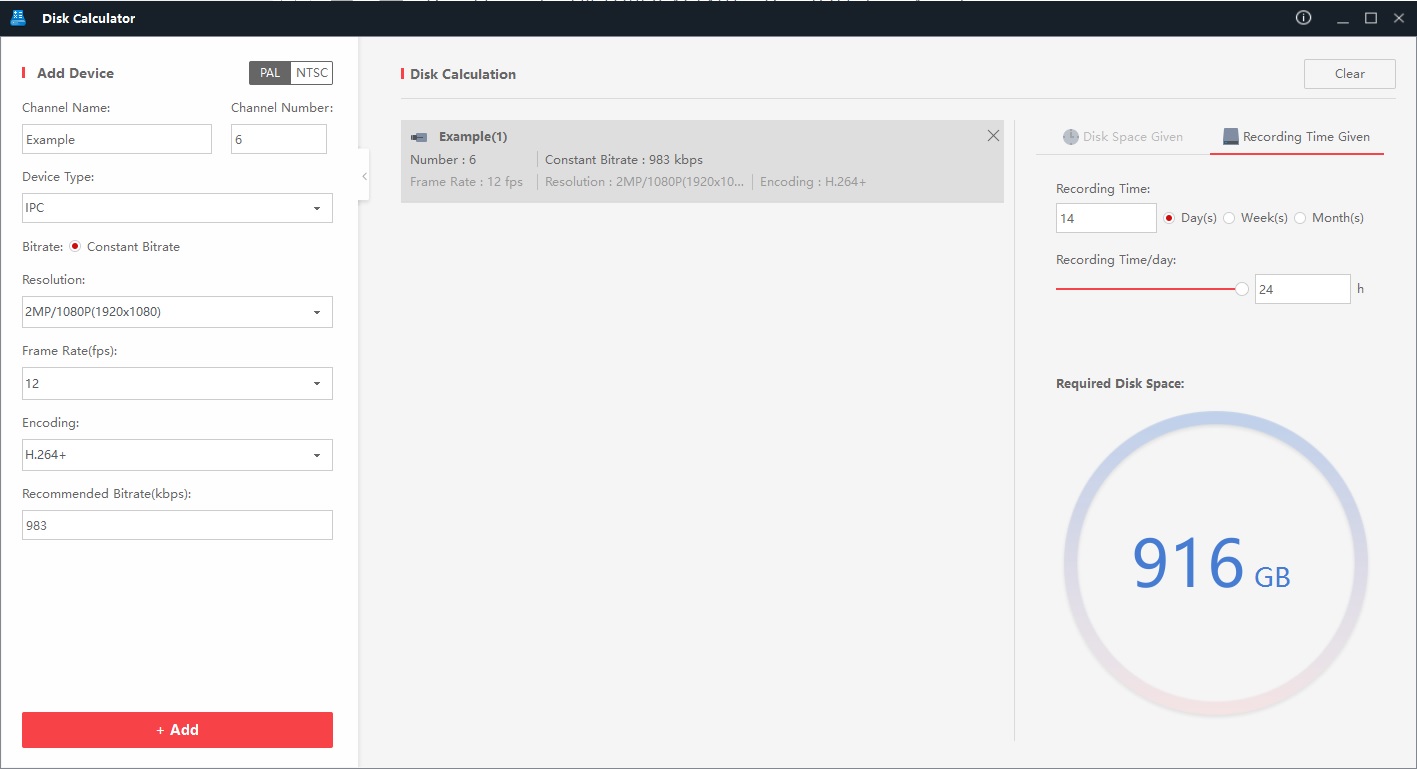
Interestingly, Hikvision's calculator gives wildly different storage values for the same given variables as systems in JVSG and other tested calculators, so it might be worth taking them with a pinch of salt.
As with all calculators though, these are approximations and may not reflect your system's actual requirements in practise.


